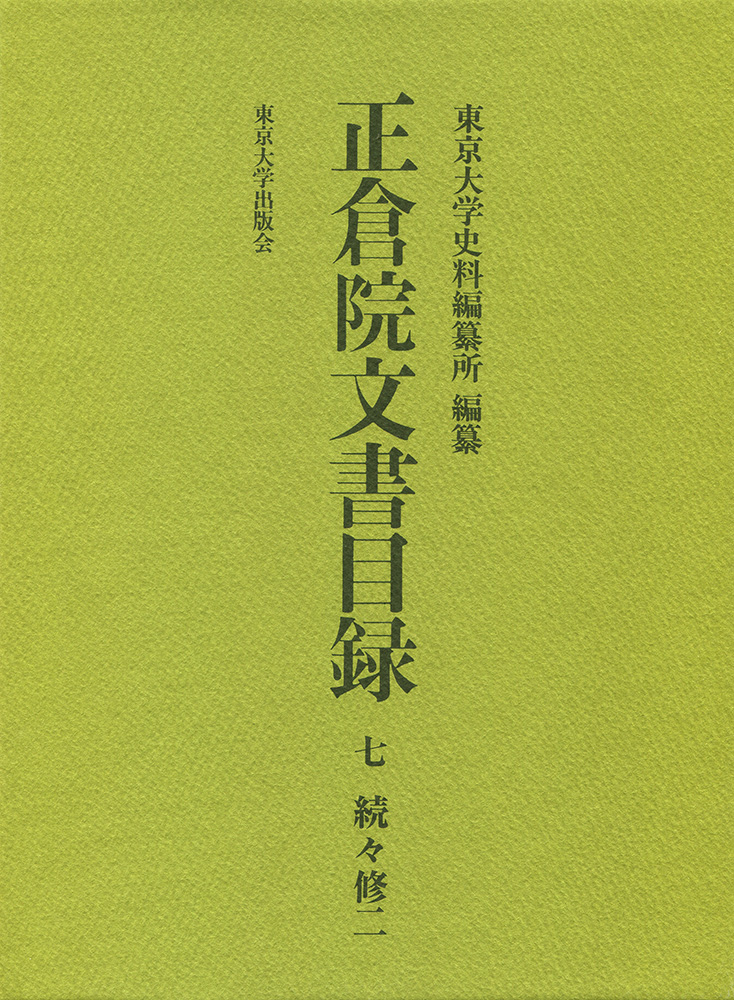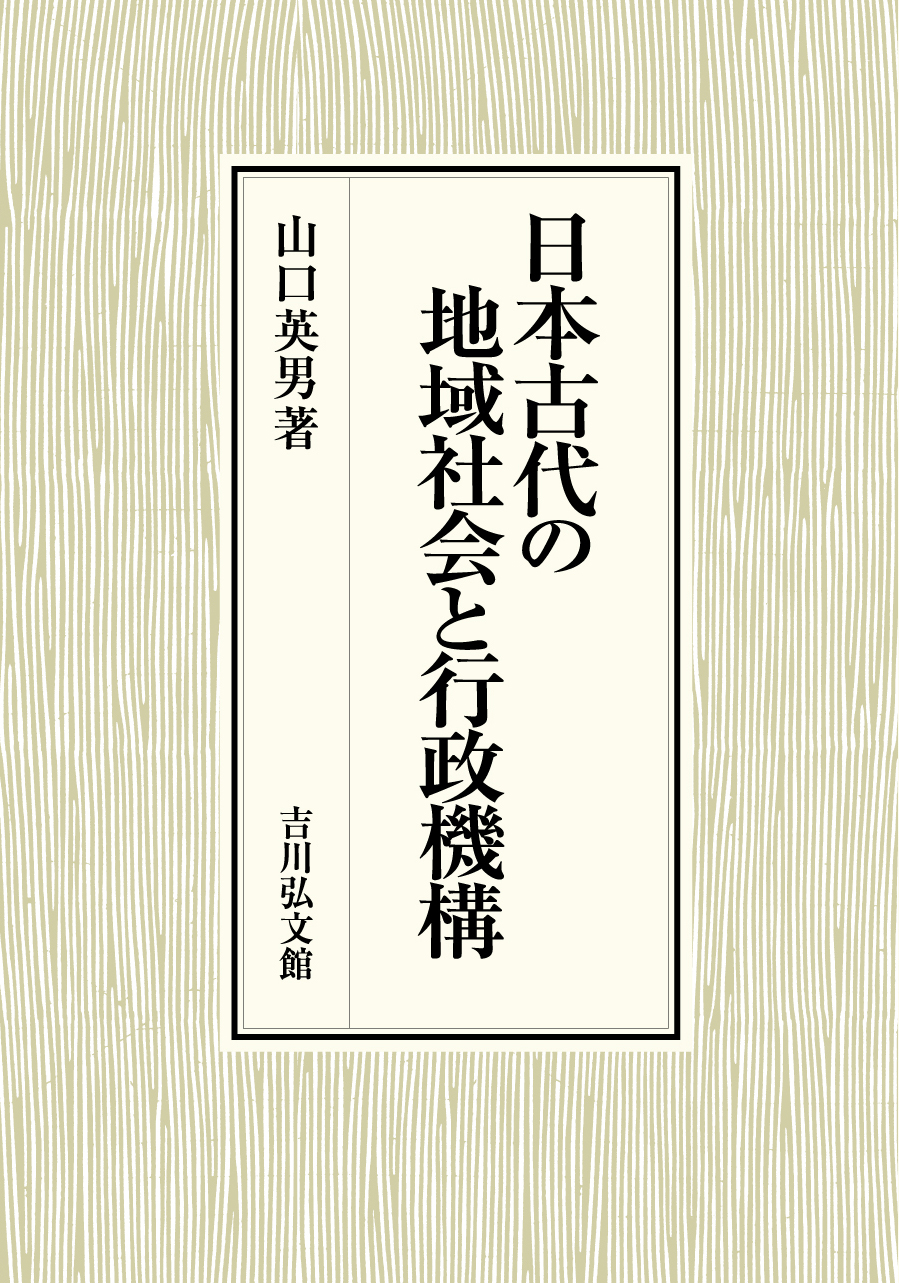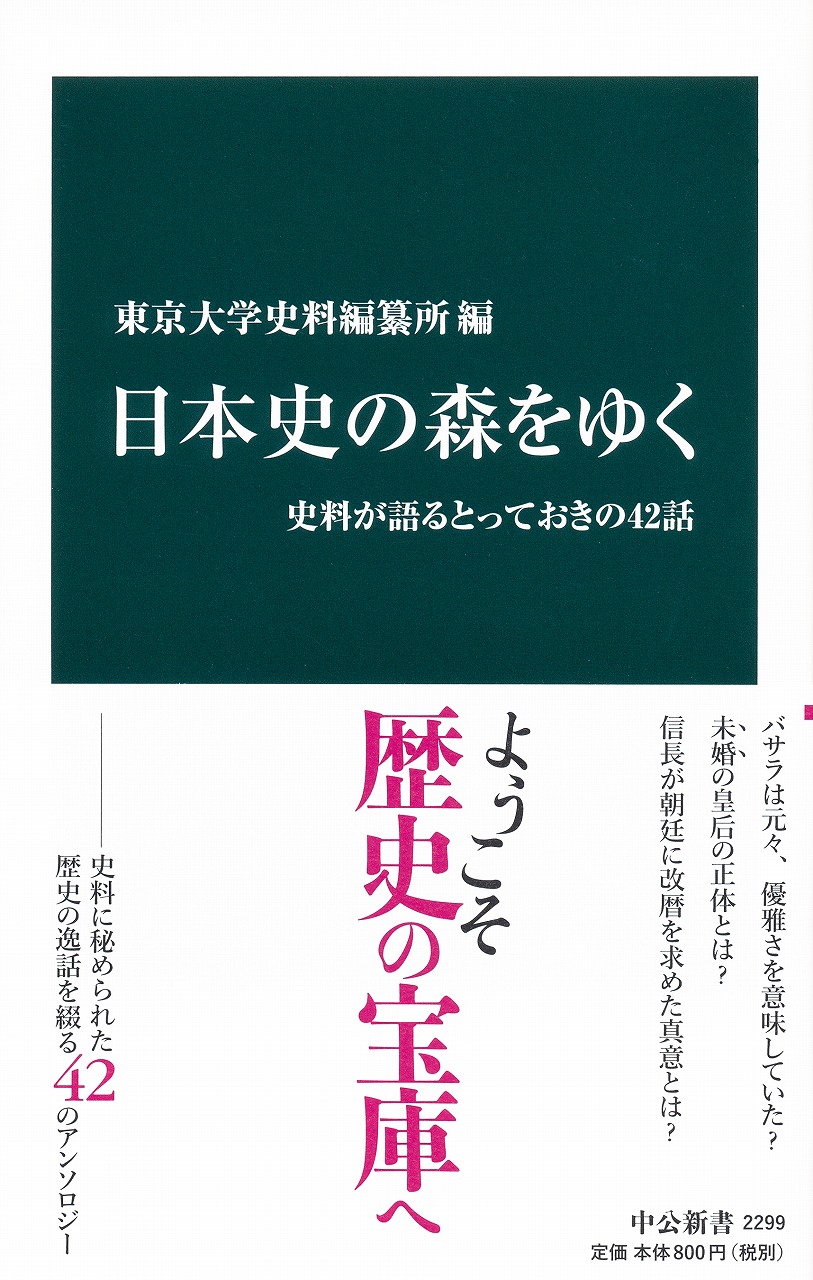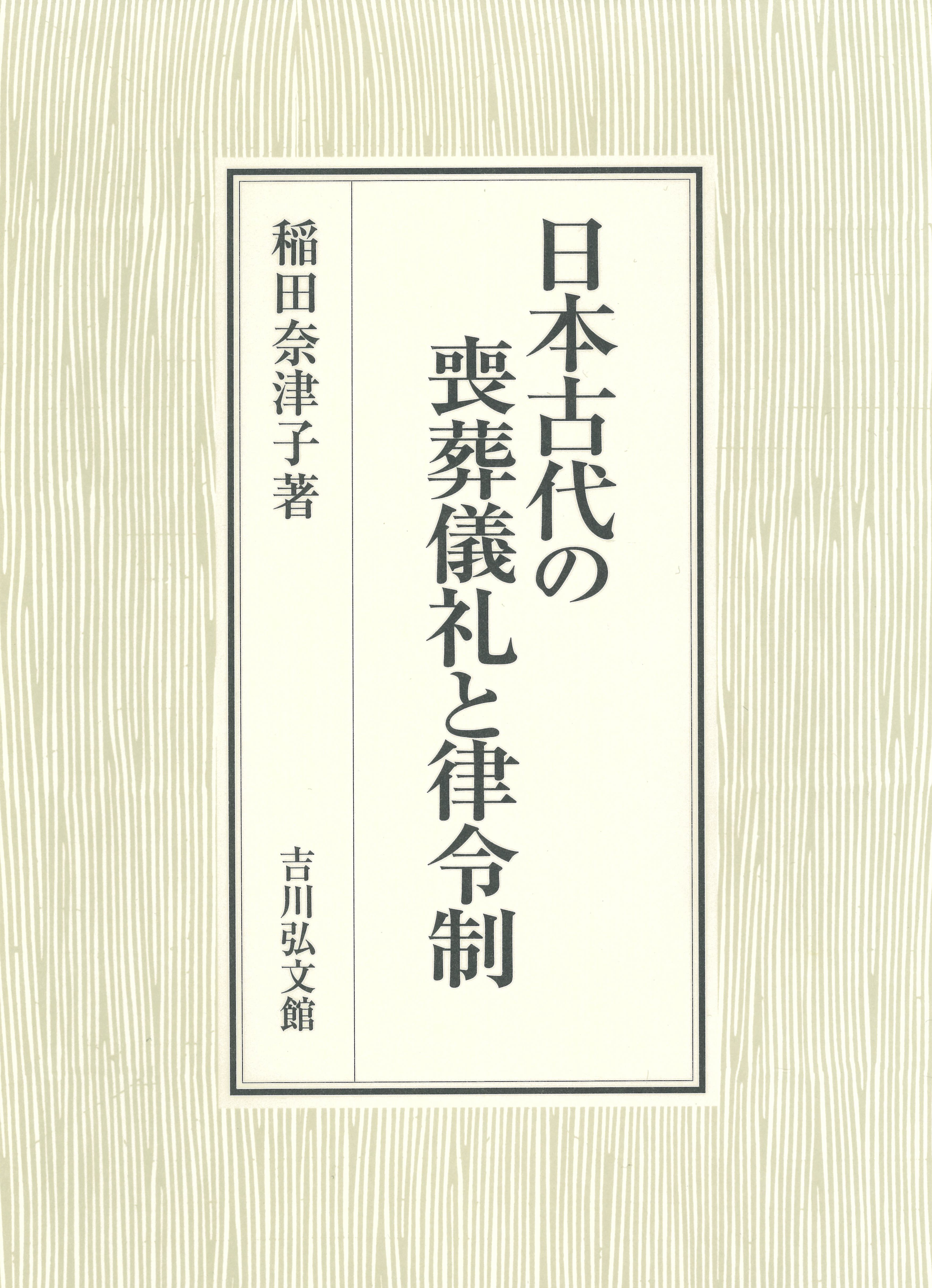
Title
Shōsō-in monjo mokuroku Shichi (Catalogue for Shōsō-in Documents: Volume 7 - Bundle 2 of the Zokuzoku-shū)
Size
584 pages
Language
Japanese
Released
April, 2015
ISBN
978-4-13-091247-1
Published by
University of Tokyo Press
Book Info
See Book Availability at Library
Japanese Page
This book is the seventh volume of the Tokyo University Historiographical Institute’s ongoing project to exhaustively catalogue each document of the Shōsōin monjo (Shōsō-in documents), a collection of primary historical sources that offer insight into the Nara period. The institute started the series in 1986 with the ultimate aim of providing researchers the necessary information to understand the Shōsōin monjo and use its content in their research. With the publication of the seventh volume, the series is estimated to be 40% complete.
The Shōsōin monjo is a collection of historical documents that were originally used and stored at the scriptorium (shakyōsho), a public office attached to the state-run temple Tōdai-ji. After they fell into disuse at the end of the Nara period, the documents were stored in the Shōsōin repository, where they remained intact through the centuries until the present day. The collection is said to include a total of over ten thousand documents.
In today’s world, if a large collection of documents being used in government offices found its way into the public domain, we would describe it as a major information leak. The “leaked” documents can potentially reveal all manner of facts about the society in question, including government affairs, the state of officials’ duties, financial information, and citizens’ personal data. One cannot predict just how much information would be revealed. The fact that the Shōsōin monjo has been passed down over the centuries until today is as significant as the above scenario. The existence of this collection allows us to trace back many of Japan’s cultural phenomena to over 1,200 years ago. As such, it is a major advantage for those wishing to examine sources of Japanese history and culture. It is a one-of-a-kind precious historical collection.
However, there is a major hurdle in researching the Shōsōin monjo. The documents are not in the original structure as when used in the Nara period. In many cases, what was once a single document has been split into multiple fragmentary documents. Researchers who access a fragmentary document would fail to grasp the full picture. Therefore, without collating these fragments with their counterparts and restoring the original documents, it would be difficult to accurately understand the content and extract the necessary information.
The institute has, therefore, taken on the necessary task of studying the manuscripts and restoring them to their original structure; results of this endeavor are presented in this book. Based on existing research and preliminary investigations researchers created a shortlist of fragments that appeared to be parts of a single original document. To determine whether there was any evidence to corroborate their suppositions, they inspected the manuscripts thoroughly, examining even minute details, such as every trace of ink, adhesive, or dye, no matter how small.
Meticulous care is required to ensure the conservation of the Shōsōin monjo. Therefore, researchers are rarely allowed to actually examine the manuscripts by hand. Since the Meiji period, the Historiographical Institute has continued to enjoy exclusive permission to examine the manuscripts. The institute has always sought to use this opportunity to provide historical information that contributes to deeper and more sophisticated research across academia as a whole. Those who have conducted such research have done so not only with a sense of responsibility and apprehension, but also with joy and gratitude at being blessed with this rare opportunity. The text in Shōsō-in monjo mokuroku (Catalogue for Shōsō-in Documents) may make for dry reading, but it reflects the passion and devotion of members of the institute going back over 1,200 years.
(Written by YAMAGUCHI Hideo, Professor, Historiographical Institute / 2017)
Related Info
https://www.hi.u-tokyo.ac.jp/english/publication/shosoin-e.html
Shosoin Monjo Multi-support database SHOMUS
http://wwwap.hi.u-tokyo.ac.jp/ships/



 Find a book
Find a book




